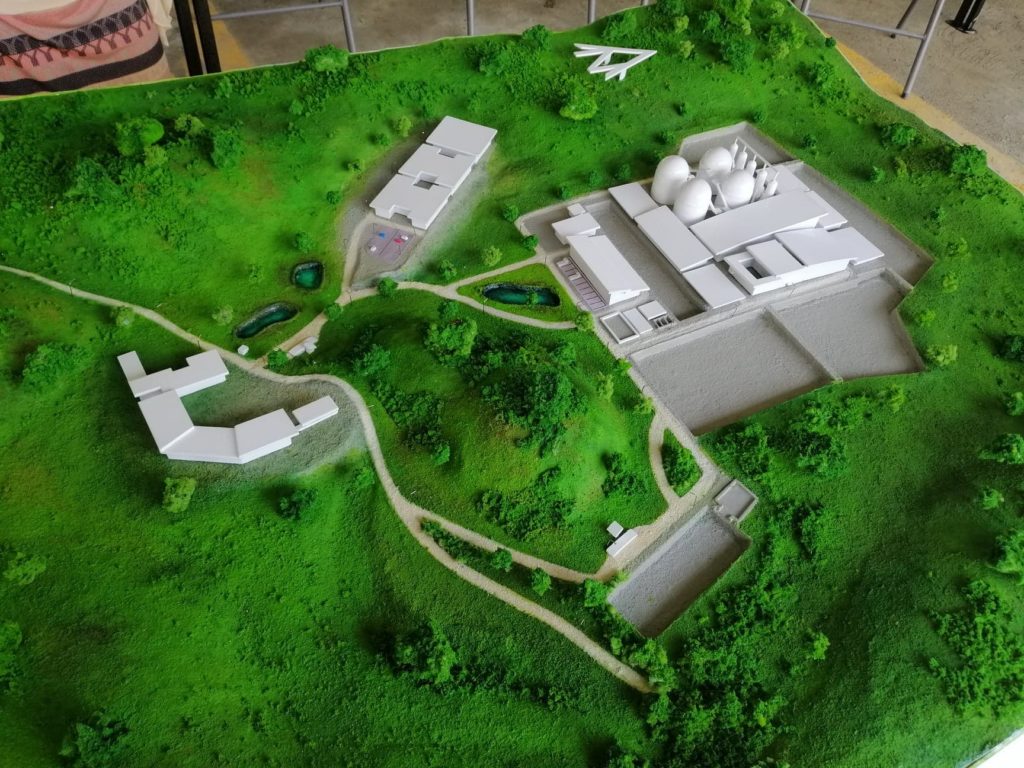
The model proposed by the ARN Waste Management Inc. that aims to improve the Binaliw landfill. | Gerard Vincent Francisco
CEBU CITY, Philippines — The Binaliw landfill will be taking more trash from other towns and cities in Metro Cebu as its developer, ARN Waste Management Inc., is currently in talks with Lapu-Lapu City, Compostela town, Consolacion town, and Mandaue City.
ARN already has a contract with Cebu City, which will start on July 1, as the city’s landfill and waste management facility allowing the city to throw its trash in their landfill.
However, this agreement was shaky as incoming Cebu City Mayor Edgardo Labella said he would be forming a committee to look into the Binaliw landfill contract with ARN Builders following the complaints of the residents of foul smell and health risks.
Read more: Binaliw residents’ call to Labella: Landfill threat to our health, close it
The Binaliw landfill management already addressed the issue with the Environmental Management Board in Central Visayas (EMB-7) and the Binaliw barangay officials.
They reached a compromise to ensure that the haulers will use neutralizing agents often to minimize the smell of the garbage they were delivering to the landfill.
Read more: Binaliw landfill developer: We’re working on the ‘bad’ smell
For this reason, Sherwin Santos, ARN Waste Management Inc. president, said he was hopeful that Labella would see the merits of the development as they had proven that they could be compliant to the environmental standards.
With the closure of the Consolacion landfill following a landslide, Mandaue City has also approached ARN to seek their services in hauling and depositing their trash, to which ARN accepted.
Read more: Mandaue City to start disposing garbage in Binaliw landfill
Santos said Lapu-Lapu City, Consolacion, and Compostela would soon throw their trash in the landfill as well.
He said that they could manage as the waste management facility would have a capacity of up to 3,000 tons of garbage per day when it would be fully functional.
The ARN Builders promised a fully sustainable waste management facility which would include the Material Recovery Facility (MRF), waste to energy facility, and water treatment technology.
In the next three years, Santos said that they were expecting to have a fully functional MRF which would cut down the landfill deposit to at least 20 percent.
In five years, fully functional gasification and anaerobic digester tanks can provide up to 20 megawatts per day which can be used as an alternative source of electricity for Cebu City and will cut down the landfill deposit to 80 percent.
The by-product of the waste to energy facility could provide fertilizers for the local farmers for free to which Santos said they would prioritize Barangay Binaliw, which was also an agricultural barangay of Cebu City.
The landfill also recycles its toxic leachate through a water treatment facility so the water from the leachate can be extracted and used again for other purposes.
Santos said he was hoping that the local government units (LGUs) could see that the Binaliw landfill was a well-designed and engineered facility that could one day be a standard for sustainable waste management in Cebu City./dbs